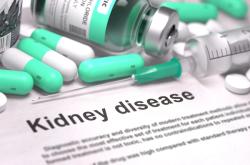Medication Cost Drives Expenses in Diabetic Macular Edema Treatment
The analysis of the DRCR Retina Network Protocol AC suggested cost savings occur with bevacizumab-first step therapy in eyes with DME, but the magnitude might not be as great as previously understood.

Nimesh A. Patel, MD
Credit: LinkedIn
Medication is the primary driver of the total expense associated with the treatment of diabetic macular edema (DME), according to new research.1
The cost analysis of the Diabetic Retinopathy Clinical Research Network Protocol AC suggested a bevacizumab-first (step therapy) treatment regimen, compared with aflibercept monotherapy, was associated with lifetime cost-savings for patients with DME.
“Although cost-savings are realized with bevacizumab-first step therapy, the magnitude was not as much as might be intuited, probably because of the high (70%) incidence of patients switching to aflibercept within protocol AC,” wrote the investigative team, led by Nimesh A. Patel, MD, at the Bascom Palmer Eye Institute, the University of Miami Miller School of Medicine.
Results from the DRCR Retina Network Protocol AC have suggested that in eyes with center-involved DME, there is no clinically meaningful difference in visual acuity outcomes over 2 years between aflibercept monotherapy vs. bevacizumab first.2
In this analysis, Patel and colleagues set out to calculate the cost of treatment for DME with bevacizumab-first, or step therapy, compared with aflibercept monotherapy, based on the previously published study. Using results from the Diabetic Retinopathy Clinical Research Network protocol AC, investigators assessed the costs of the two treatment arms. The investigative team incorporated the frequency of injections, medication type, visits, and imaging data in the usage and outcome model.
Costs were then modeled based on 2022 Medicare reimbursement data for both facility (hospital-based) and non-facility settings in Miami, Florida. The outcomes were similar in protocol AC and were not differentially studied. Investigators extrapolated results to estimate lifetime cost or 17 years for the age of the cohort.
The main outcome measure for the analysis was the cost of treatment options. Over the 2 years reported in the protocol AC, the analysis showed it cost $42,000 to treat in the facility and $32,000 to treat in the non-facility setting in the aflibercept monotherapy group. In comparison, the costs were $29,000 in the facility setting versus $22,000 in the non-facility setting in the bevacizumab-first group.
As a result, the analysis indicated the extrapolated modeled lifetime costs were $158,000 in the facility setting and $136,000 in the non-facility setting for the aflibercept monotherapy group. For the bevacizumab-first group, the extrapolated modeled lifetime costs were $125,000 in the facility setting and $103,000 in the non-facility setting.
Data showed the total cost with bevacizumab-first was 33% lower at 2 years and 21% lower at 17 years, compared with aflibercept monotherapy. The savings per year for the 2-year results were $6500 in the facility setting and $5000 in the non-facility setting. Moreover, for the extrapolated 17 years model, the annual savings were $1900 in both the facility and non-facility settings.
Investigators noted that professional fees accounted for a minority of overall costs, but medication costs accounted for 82% of the total costs for the aflibercept monotherapy and 73% in the bevacizumab-first group at 2 years.
“Our model predicted an additional 15% lifetime cumulative savings if patients still not meeting the threshold criteria after switching to aflibercept were placed back on bevacizumab, and a similar degree of improvement if those on not meeting threshold criteria on aflibercept monotherapy were switched to bevacizumab,” investigators wrote.
References
- Patel NA, Al-Khersan H, Yannuzzi NA, Lin J, Smiddy WE. Aflibercept Monotherapy versus Bevacizumab-First for Diabetic Macular Edema: A Cost Analysis Based on Diabetic Retinopathy Clinical Research Network Protocol AC Results. Ophthalmol Retina. 2023;7(5):413-419. doi:10.1016/j.oret.2022.11.010
- Jhaveri CD, Glassman AR, Ferris FL 3rd, et al. Aflibercept Monotherapy or Bevacizumab First for Diabetic Macular Edema. N Engl J Med. 2022;387(8):692-703. doi:10.1056/NEJMoa2204225
Related Content:


